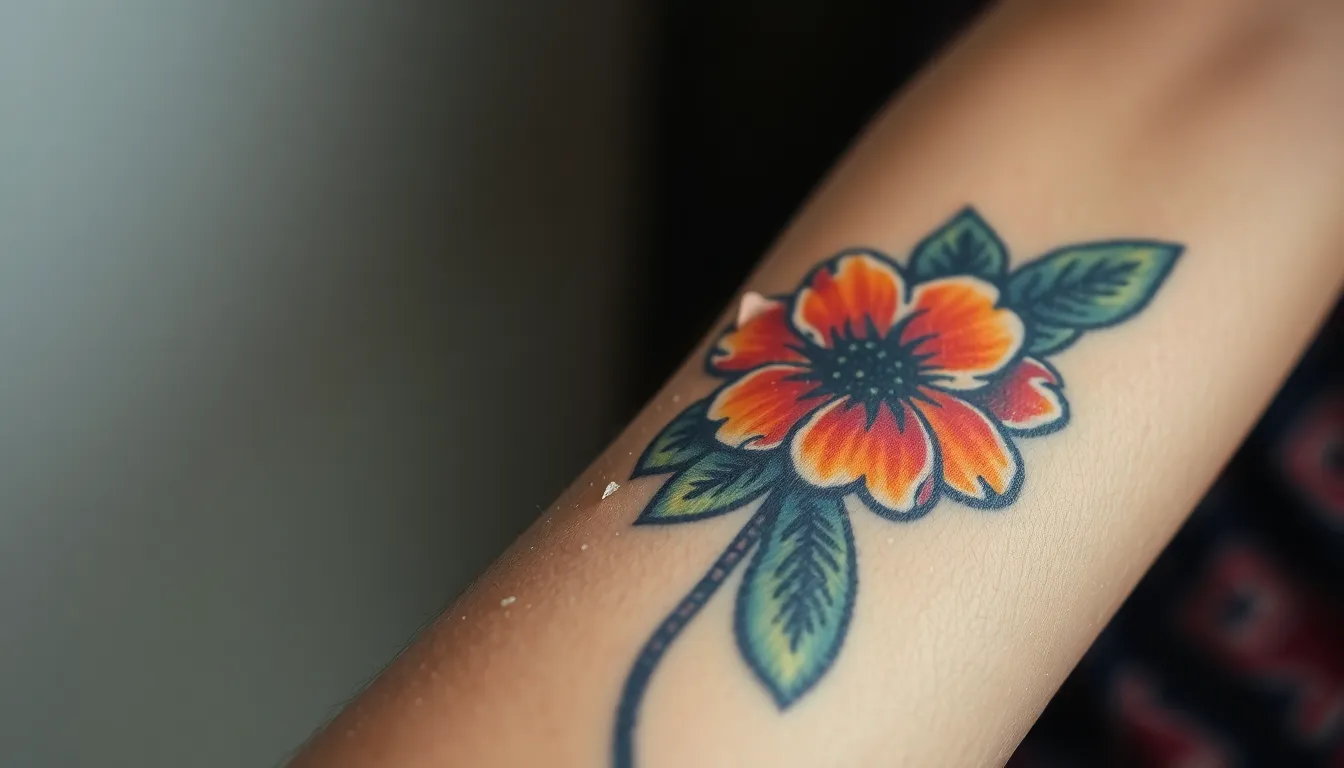Getting a new tattoo is like adopting a tiny work of art that lives on your skin. It’s exciting, it’s personal, and it’s a commitment. But what happens when that masterpiece starts to peel? Is your tattoo throwing a hissy fit, or is it just going through a normal phase?
Peeling can feel alarming, but it’s often part of the healing process. Just like a snake shedding its skin, your tattoo might need a little help to reveal its true colors. It’s a natural response, but understanding the ins and outs can save you from unnecessary panic. So before you start Googling “tattoo emergency,” let’s dive into the world of peeling tattoos and discover what’s really going on beneath the surface.
Table of Contents
ToggleUnderstanding Tattoo Healing
Tattoo healing involves several stages that are crucial for proper recovery. Understanding the process helps individuals know what to expect and when to seek assistance.
The Tattoo Healing Process
Initially, the body starts to repair the skin immediately after getting a tattoo. This triggers inflammation, which can last from a few hours to several days. As healing progresses, a scab may develop to protect the area, and some individuals notice peeling during this time. Peeling is common, indicating that the outer layer of skin is shedding. Proper aftercare, including moisturizing, supports the healing process. Signs of infection, such as increased redness or pus, require immediate medical attention.
Common Stages of Tattoo Healing
Tattoo healing undergoes multiple stages. Days 1 to 3 generally involve inflammation and tenderness. By days 4 to 6, scabbing and peeling may occur, which is normal. During weeks 2 to 3, the tattoo’s appearance might look dull or faded as the skin continues to heal. By weeks 4 to 6, most tattoos appear much clearer and vibrant. At this point, the tattoo fully settles into the skin, completing the healing process.
Is It Normal for Tattoos to Peel?

Experiencing peeling after getting a tattoo often falls within the realm of normal. This process can be attributed to the skin’s natural healing response once ink has been introduced.
Reasons for Peeling
Peeling occurs as the skin repairs itself following trauma. Ink insertion creates micro-wounds which trigger the body to shed damaged skin cells. The formation of a protective crust or scabs also contributes to the peeling. Moisture loss during healing can exacerbate this, leading to dryness. Additionally, body reactions to the ink may vary, influencing the intensity of peeling. Skin types and individual healing responses play significant roles in how and when peeling manifests.
When Peeling is Expected
Typically, peeling begins about three days after getting a tattoo. This timeline can vary depending on the person’s healing pace and tattoo size. Most people notice peeling occurring within the first week. Although some may see it last longer, around two weeks is common for a majority. By weeks four to six, healing generally progresses, with tattoos appearing clearer and more vibrant. Understanding this timeline helps manage expectations during the healing journey.
How to Care for a Peeling Tattoo
Caring for a peeling tattoo promotes healing and preserves the artwork. Understanding what to do and what to avoid helps ensure the tattoo heals properly.
Do’s and Don’ts
Do keep the tattoo clean using mild soap and lukewarm water. Do gently pat the area dry with a clean towel. Do apply a fragrance-free moisturizer to alleviate dryness. Do wear loose clothing to avoid irritation during the healing process.
Don’t pick or scratch the peeling skin, as this can lead to scarring. Don’t expose the tattoo to direct sunlight until fully healed. Don’t soak the tattoo in water, including pools or hot tubs, to prevent excess moisture. Don’t apply ointments or Vaseline that aren’t designed for tattoos.
Recommended Aftercare Products
Gentle, fragrance-free soap helps cleanse the tattoo without irritation. Recommended products include Dove Sensitive Skin or Cetaphil Gentle Skin Cleanser.
For moisturizer, Aquaphor Healing Ointment or a specific tattoo lotion like After Inked works well. Both help keep the skin hydrated during the peeling process.
Use sunscreen with SPF 30 or higher once the tattoo is healed, preventing fading due to sun exposure. Tattoo-friendly sunscreen brands like H2Ocean or Neutrogena Shield offer effective protection.
Signs of Complications
It’s essential to monitor a healing tattoo for complications. Noticing unusual signs can prevent further issues.
Infections and Allergic Reactions
Infections may show symptoms like increased redness, swelling, or pus. These signs indicate that bacteria may have entered the skin. Allergic reactions can cause intense itching or rash around the tattooed area. Redness, inflammation, and discomfort often accompany these responses. It’s crucial to differentiate between normal healing and these alarming signs. Proper aftercare can help minimize risks, but if symptoms persist, seeking professional advice is vital.
When to Consult a Professional
Consulting a professional becomes necessary if symptoms worsen or new concerns arise. Increased pain that doesn’t subside, fever, or unusual discharge signals potential complications. Persistent itchiness or swelling that doesn’t improve should prompt immediate consultation. Timely intervention can address issues effectively. Tattoo artists can provide specific insights into healing, while dermatologists can assist with severe reactions or infections. Ensuring prompt action protects both health and the integrity of the tattoo.
Conclusion
Peeling during the tattoo healing process is a common experience that many face. It’s a natural part of the skin’s recovery as it sheds damaged cells and forms a protective layer. Understanding this phase can help alleviate concerns and promote a smoother healing journey.
Proper aftercare is crucial in supporting the healing process and preserving the tattoo’s appearance. Keeping the area clean and moisturized while being mindful of potential complications ensures both health and the integrity of the artwork. By following recommended practices and monitoring for any unusual symptoms, tattoo enthusiasts can enjoy their new ink with confidence.





